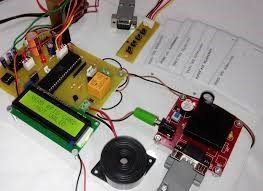Printed circuit boards which may also be called Printed wiring boards or Printed wiring cards are the fundamental blocks in advanced modern circuits and advanced modern electronics. The evolution and serendipity of manufacturing and designing technology have pushed the complexity and complications of the electric integrated circuits to new horizons.

The printed circuit boards are used extensively in the electronics industry with applications ranging all over the consumer electronics spectrum. The single-sided PCBs dominate the market in terms of sheer volume as they are least expensive and provide a quick and cost-effective solution to most problems in electronic circuits. Single-sided PCBs have a low probability of manufacturing issues. They are popular, common and are most familiar with most PCB manufacturers. Though these PCBs are usually simple still they have also reemployed in highly significant and complex electronic devices i.e. Power supplies, Relays, Radio, surveillance etc. Double-sided PCBs are mostly used in industrial controls, control relays, HVAC systems, hard drives, printers, amplifiers, test equipment etc. The Multilayer PCBs are mainly used in computers, file servers, data storages, GPS technology, X rays equipment, cell phone transmission and internal circuitry and enumerate a number of other such complex integrated circuits.

The use of printed circuit boards are numerous and we will study their use in the security systems i.e. RFID systems. The printed circuits boards have made their use highly commercial with enhance features, usability, and affordability.

RFID technique is much more elaborate, sophisticated, and accurate as it provides greater flexibility in workings of a tracking and control system as compared to a barcode system. Barcode is an in line of sight technology means it only works in the vicinity system which is in line of sight to the ‘reader’ while RFID, in this case, provides much greater flexibility as it isn’t in line of sight technology but works in the area which a specific radio frequency range which can range from (30Khz to 500Khz), (800MHz to 950Mhz) and (2.4GHz to 2.5GHz). Greater the radio frequency, greater is the range of the system and vice versa. It has high range and is less affected by atmospheric conditions as compared to barcodes. RFID also enables multiple readings at a time which in case of barcodes cannot be realized.

The implementation of RFID system can be divided into five steps for smooth working and better knowledge.
Patch Antenna was designed for the radio frequency of 920MHz to 928Mhz and four patch antennas were allocated for each shelf in the library to get the tag information i.e., ID code and locational information regarding the particular item.
In the design of antenna two techniques were employed. The gist of 1st techniques was to add a matching network between the part of the antenna and a 50Ω line in order to do the matching. A basic diagram of such an arrangement is given as below:

Switching circuit is used for the selection of antenna of the shelves and transmits data from the shelf onto the computer via the antenna. The switching circuit was built using an inductor, capacitor and a PIN code. The switching circuit had one input ports and four output ports and it was controlled by voltage impulses.

The reader is supposed to be a static switch which is in an inactive state when it doesn’t receive any data from the computer but it turns on in an event of receiving data from the computer. The receiver is on the receiving end of the antenna and the data as selected by the switching circuitry is transmitted from the antenna is received here.

Computer Interface is the final stage in the implementation of RFID system and it is essential in the implementation of the RFID technique for the acquisition of data from the antenna.
All the stages of the RFID can be implemented on printed circuit board with ease hence making the process less tedious, time-saving and cost-effective.

